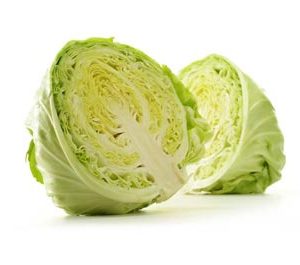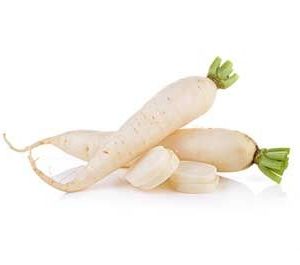In 2014, the world’s largest white truffle, weighing 4.16 pounds (1.89) kilos was auctioned at an astounding price of $61,250. To say that was a lot of money for a fungus is surely an understatement, but considering that truffles are a savory culinary treasure that cannot be cultivated or bought just anywhere can certainly make up for its extravagant price.
So what exactly are truffles and why are they so revered in the culinary world?
What Is a Truffle?
Truffles (Tuber) are an edible type of fungus that grows underground (subterranean). They usually thrive 2.5 to 10 centimeters below the soil, and mainly live off the roots of certain tree varieties, like oak and hazelnut. Attaching to a host allows them to receive sugars that they need to grow, and in turn, they provide the tree with phosphorus. Once the tree and the fungal filaments have reached maturity, (typically about five years), the edible “fruiting body” is produced and then harvested.
Although truffles are often classified as a type of mushroom, they do not have the same appearance that most mushrooms have. They’re usually round and firm, with a texture similar to a potato. Their skin is tough and scaly, which is understandable considering the conditions they grow in. There are two primary types of truffle, both from Europe (particularly in Italy and France), that are highly prized today:
- Black truffle (tuber melonosporum)is a cold-weathered fungus that’s usually found thriving under oak trees from September to December. It originally hails from the Perigord region in southwest France. Black truffle can sell for over $400 a pound.
- White truffle (tuber magnatum) is originally grown in the Piedmont region in northern Italy, particularly in the countryside around Alba. These truffles grow on the roots of oak, poplar, beech and hazel trees, usually in the winter and autumn months. Piedmont’s white truffles are said to be more aromatic, and cost much more than other varieties – as much as $2,200 per pound.
Truffles are not harvested the same way that mushrooms are. Instead, specially trained dogs or pigs are used to sniff and dig out these fungi. Recently, however, truffle farmers prefer using dogs, as hogs tend to eat the hard-to-find and expensive delicacy.
But what exactly do truffles taste like? There are several ways to describe the flavor and odor of this food, but probably the best description would be earthy or woody. Truffle actually contains three types of umami substances, and adding just a thin slice of it can add a rich flavor to foods.
Black truffle tastes earthy and has a pungent odor, while white truffle’s flavor hints of shallots and garlic, and has a musky aroma. The white truffle is said to be superior in taste compared to the black truffle, which is why it’s more expensive.
Recently, truffles have been the subject of controversy, mainly because of the spread of Chinese truffles. In China, truffles have been mainly used as feed for pigs, until one businessman decided to sell these to the French. Known as tuber indicum, these “fake truffles,” although significantly cheaper in price, lack the taste and smell of true truffles. This is because the Chinese do not use dogs or pigs to track and sniff out the truffles when they have ripened – instead, they rake at the ground and harvest the fungi once they see them, even if the fungi have not yet reached their peak ripeness. Many French truffle growers have declared war against these cheap products, which they say unscrupulous chefs are using to dupe customers.
How to Grow Truffles: It’s Not as Easy as It Seems
Many people are not aware where truffles grow, but most probably believe that these are wild-growing fungi that can only be acquired from forests. Here’s a fact: most truffles today are actually cultivated. However, truffle growing is an intricate and lengthy process.
Once you’ve planted a host tree and impregnated it with the fungi, it may take between four to seven years before the first truffle appears. The weather also plays a significant role in truffle production, as these fungi need four well-defined seasons to thrive. They grow best in a temperate climate that does not have any extreme temperature variations.
Snow is ideal, since it insulates the ground and keeps truffles warm, but once the temperature goes down around 20 degrees Fahrenheit and below for more than a few days, the truffles may become damaged. It might also be difficult to harvest winter truffles if the ground is frozen.
If your budget permits it, it’s good to indulge in truffles every once in a while, especially if you consider that they may offer significant nutrients that are good for your health.
| Truffles Nutrition Facts
Serving Size: 50 grams |
||
| Amt. Per Serving |
% Daily Value* |
|
| Calories | 239 | |
| Calories from Fat | ||
| Total Fat | 16 g | |
| Saturated Fat | 10 g | |
| Trans Fat | ||
| Cholesterol | 25 mg | |
| Sodium | 34 mg | |
| Total Carbohydrates | 21 g | |
| Dietary Fiber | 1 g | |
| Sugar | 0 g | |
| Protein | 2 g | |
| Vitamin A5% | Vitamin C | 8% |
| Calcium0% | Iron | 3% |
*Percent Daily Values are based on a 2,000 calorie diet. Your daily values may be higher or lower depending on your calorie needs.
However, make sure that you’re getting real truffles – not truffle oil and most definitely not fake Chinese truffle. The price may be a bit steep, but the flavor genuine truffles bring is surely unforgettable.







Reviews
There are no reviews yet.